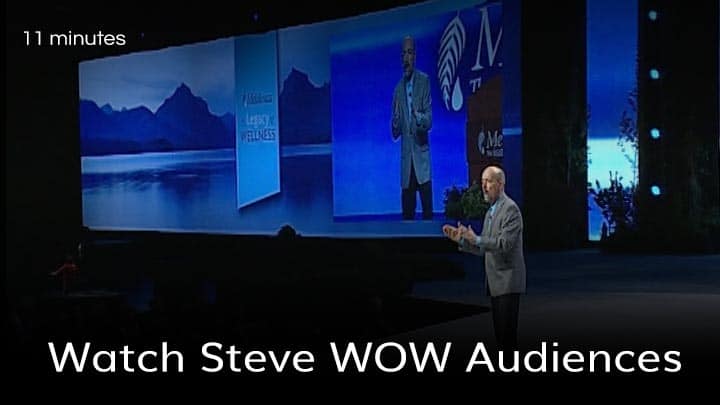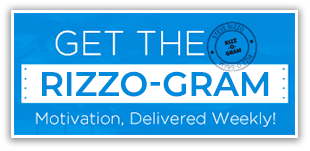Blog
Force vs Flow in Business
Force vs. Flow: Why the Best Leaders Stop Pushing and Start Flowing
The Paradigm Shift That’s Transforming How We Work
Let’s talk force vs flow in business. For decades, business success has been synonymous with force. Push harder. Work longer. Demand more. Force the, the outcome, and yourself through exhaustion to reach that quarterly goal. But here’s what I’ve discovered after years of speaking to thousands of business leaders, corporate teams, and entrepreneurs across the globe: force is killing your productivity, creativity, and success.
The most successful leaders I’ve worked with—from Fortune 500 CEOs to innovative startup founders—have discovered something revolutionary: flow beats force every single time.
Let me share with you why this mindset shift isn’t just some feel-good philosophy. It’s a practical, powerful strategy that will transform how you lead, how your team performs, and ultimately, how successful your business becomes.
Force vs Flow in Business: What Is Force in Business? (And Why We’re Addicted to It)
Force in business looks like control, micromanagement, and resistance. It’s the constant pushing against reality, fighting what is, and trying to strong-arm outcomes into existence.
Here’s what force looks like in the workplace:
The Forced Sales Approach: Aggressive cold calls, pushy tactics, and viewing every prospect as a target to conquer rather than a relationship to build. You’re chasing clients instead of attracting them.
The Forced Leadership Style: Dictating every decision, hovering over employees, and believing that if you’re not pushing every moment, nothing will get done. This creates a culture of fear rather than innovation.
The Forced Work Ethic: Glorifying exhaustion, wearing burnout as a badge of honor, and believing that if it’s not painful, you’re not working hard enough. Rest becomes laziness, and balance becomes weakness.
The Forced Mindset: Believing that success only comes through struggle, that everything worthwhile must be difficult, and that ease means you’re doing something wrong.
Sound familiar? I’ve been there. As a former national headline comedian who transitioned to becoming a Hall of Fame speaker, I learned the hard way that forcing things never works—not on stage, not in business, not in life.
Force vs Flow in Business: The Cost of Operating in Force Mode
Let’s get real about what force is costing your organization:
1. Employee Burnout and Turnover
When your corporate culture operates on force, you’re burning through talent faster than you can replace it. Talented employees don’t leave companies—they leave forced environments where there’s no room to breathe, think, or create.
2. Innovation Drought
Force kills creativity. When your team is stressed, micromanaged, and constantly pushing against unrealistic demands, innovation dies. The best ideas don’t emerge under pressure—they emerge in flow states where people have the mental space to think differently.
3. Customer Relationships Suffer
Customers can smell desperation. When your sales team is forcing deals, when your service department is pushing solutions instead of listening, you’re creating transactional relationships instead of transformational ones.
4. Leadership Exhaustion
As a leader, operating in force mode is exhausting. You’re fighting fires, controlling outcomes, and carrying the weight of everything on your shoulders. It’s unsustainable, and it’s unnecessary.
5. Missed Opportunities
When you’re so focused on forcing your predetermined outcome, you miss the opportunities right in front of you. You’re so busy pushing your agenda that you can’t see the better path that’s presenting itself.
What Is Flow in Business?
Flow is the opposite of force, but it’s not passive. Flow is active alignment with reality. It’s working with what is rather than against it. It’s strategic adaptability rather than rigid control.
In business, flow means:
Strategic Alignment: Your actions align with your values, your team’s strengths, and market realities. You’re not swimming upstream—you’re finding the current that moves you forward naturally.
Authentic Leadership: You lead from a place of confidence rather than control. You trust your team, empower their decision-making, and create an environment where excellence emerges organically.
Natural Sales: You attract ideal clients through value creation rather than chasing every prospect. Your marketing feels magnetic rather than pushy.
Sustainable Success: You build systems and cultures that sustain themselves. Success doesn’t require your constant intervention because you’ve created momentum.
Mindful Action: You’re present, aware, and responsive rather than reactive. You make decisions from clarity rather than panic.
Force vs Flow in Business: The Science Behind Flow States
This isn’t just motivational fluff—there’s hard science backing the power of flow.
Researchers have found that when individuals enter flow states—those moments of complete immersion where time seems to disappear and productivity skyrockets—their productivity increases by up to 500%. Five hundred percent! That’s not a typo.
Flow states trigger a cascade of neurochemicals including dopamine, norepinephrine, endorphins, anabinandamide, and serotonin. These are the same chemicals that expensive performance-enhancing drugs try to replicate. Your brain produces them naturally when you operate in flow rather than force.
Here’s what happens in a flow state:
- The prefrontal cortex—the part of your brain responsible for self-doubt and overthinking—temporarily deactivates
- Pattern recognition increases dramatically
- Creative problem-solving accelerates
- Time distortion occurs (hours feel like minutes)
- Intrinsic motivation peaks
Now imagine creating a corporate culture where your entire team operates in flow states regularly. The competitive advantage would be unstoppable.
Force vs Flow in Business: How to Shift from Force to Flow in Your Business
Making this shift requires a fundamental mindset change. Here are the practical strategies I’ve shared with organizations across the globe:
1. Replace Control with Trust
The biggest shift leaders must make is moving from control to trust. Stop micromanaging every detail. Hire talented people, train them well, communicate clear expectations, and then trust them to deliver.
When you release control, you create space for innovation, ownership, and excellence. Your team rises to meet high expectations when they’re empowered to get there their own way.
2. Focus on Attraction, Not Pursuit
Stop chasing clients and start attracting them. Build a brand that resonates with your ideal customers. Create content that provides value before asking for the sale. Position yourself as the obvious choice rather than one of many options fighting for attention.
In sales, flow means the customer comes to you already interested, educated, and ready to buy. Force means you’re cold-calling reluctant prospects trying to manufacture interest.
3. Build Systems That Create Natural Momentum
Force requires constant energy input. Flow creates momentum that sustains itself.
Invest time in building systems, processes, and automations that work without your constant intervention. Create feedback loops that correct themselves. Design workflows that enhance natural productivity patterns rather than fighting them.
4. Align Work with Natural Rhythms
Not everyone is productive from 9 to 5. Some people do their best creative work early morning, others late at night. When possible, allow flexible schedules that honor natural productivity rhythms.
The same applies to project timelines. Some projects require intense sprints, others benefit from slow, steady progress. Flow means matching your approach to the natural rhythm of the work, not forcing everything into the same template.
5. Practice Strategic Surrender
This is the most counterintuitive concept for Type-A business leaders: sometimes the most powerful action is letting go.
Strategic surrender doesn’t mean giving up—it means releasing your grip on outcomes you can’t control so you can focus energy on what you can influence.
When a strategy isn’t working, flow means pivoting quickly rather than forcing a bad approach. Consider an employee isn’t the right fit – flow means making difficult decisions early rather than forcing the relationship to work. If market conditions change, flow means adapting rather than fighting reality.
6. Create Space for Creative Thinking
Schedule unstructured time for yourself and your team. The best insights don’t emerge during back-to-back meetings—they emerge during walks, in quiet moments, during conversations that wander into unexpected territory.
Google’s famous 20% time policy (allowing employees to spend 20% of their time on passion projects) emerged from understanding this principle. Gmail, Google News, and AdSense all emerged from flow states, not forced productivity.
7. Lead with Questions, Not Answers
Leaders operating in force mode believe they must have all the answers. Leaders operating in flow know the right question is more powerful than any answer.
When challenges arise, ask your team: “What do you think we should do?” “What solutions do you see?” “What’s the opportunity here?”
This approach creates ownership, develops critical thinking, and often surfaces better solutions than you would have dictated.
The Rizzo Reality Check: Flow Doesn’t Mean Easy
Here’s where I need to give you a reality check: choosing flow over force doesn’t make business easy. It makes it effective.
Flow still requires discipline, consistency, and strategic effort. The difference is that your effort compounds rather than depletes you. You’re working with reality rather than against it.
Think of it like swimming. Force is swimming against the current—you’re exhausted and barely moving. Flow is swimming with the current—you’re still swimming, still exerting effort, but you’re covering ground faster with less energy expenditure.
Force vs Flow in Business: Measuring the Flow Advantage: Key Performance Indicators
How do you know if you’re successfully shifting from force to flow? Watch these indicators:
Employee Engagement Scores: Teams operating in flow report higher job satisfaction, lower stress, and greater sense of purpose.
Innovation Metrics: Track new ideas generated, implemented, and successful. Flow cultures produce more innovation.
Customer Retention Rates: When your team operates from flow, customer experience improves naturally, leading to higher retention and referrals.
Leadership Bandwidth: As a leader, you should find yourself with more strategic thinking time and less firefighting time.
Revenue Per Employee: Flow states dramatically increase productivity, which should reflect in revenue metrics.
Time to Market: Projects completed in flow typically finish faster despite feeling less rushed.
Real-World Applications: Where to Start Tomorrow
Here’s your action plan for beginning this shift immediately:
Tomorrow Morning: Start your day by asking, “What would make today feel effortless?” Notice what creates resistance versus what creates momentum. Follow the momentum.
This Week: Identify one area where you’re forcing outcomes. It might be a struggling project, a difficult employee situation, or a sales strategy that’s not working. Ask yourself: “What would flow look like here?”
This Month: Conduct a team survey asking: “Where do you feel most in flow at work?” and “Where do you feel most forced?” Use the insights to redesign workflows and processes.
This Quarter: Evaluate your corporate culture through the force-versus-flow lens. What policies, practices, and norms are creating force? What changes would create more flow?
Force vs Flow in Business: The Leadership Mindset That Enables Flow
Ultimately, shifting from force to flow requires embracing a new leadership mindset:
Trust over control. Believe your team is capable and motivated to excel when given the right environment.
Adaptation over rigidity. Be willing to change course when reality presents a better path.
Long-term thinking over short-term wins. Build sustainable success rather than forcing quarterly results at any cost.
Presence over panic. Make decisions from a calm, centered place rather than reacting to every fluctuation.
Value creation over value extraction. Focus on creating so much value that success becomes inevitable rather than forcing transactions.
Force vs Flow in Business: Your Shift Starts Now
The business world is changing. The leaders who will thrive in the next decade aren’t those who can push the hardest—they’re those who can flow the smartest.
They’re building cultures where people want to work, not where they have to work. Creating products customers seek out rather than tolerate. Leading with vision that attracts rather than control that repels.
The question isn’t whether you can afford to make this shift. The question is: can you afford not to?
Your competition is already making this transition. The talent you want to attract is seeking flow-based cultures. The customers you want to serve can feel the difference between forced transactions and authentic relationships.
As I always say: Your mindset writes the story of your life. What kind of story are you writing in your business? One of constant struggle and force? Or one of strategic flow and sustainable success?
The choice is yours. But I can tell you from working with thousands of leaders across every industry: once you experience the power of flow, you’ll never go back to force again.
Force vs Flow in Business: Get Your Shift Together
If you’re ready to transform your leadership approach from force to flow, start by examining one simple question each day: “Am I pushing against reality or working with it?”
That awareness is the first step toward a business that doesn’t just survive but thrives—with less stress, more innovation, and results that compound over time.
Because here’s the truth: success doesn’t have to be hard. It just has to be aligned.
Now get out there and get your shift together.
About Steve Rizzo: Steve Rizzo is a Hall of Fame speaker, former national headline comedian, and expert in mindset transformation. He works with organizations across the globe to shift mindsets from failure to success, from force to flow, and from “Woe is me” to “Wow is me!” Learn more at steverizzo.com.


